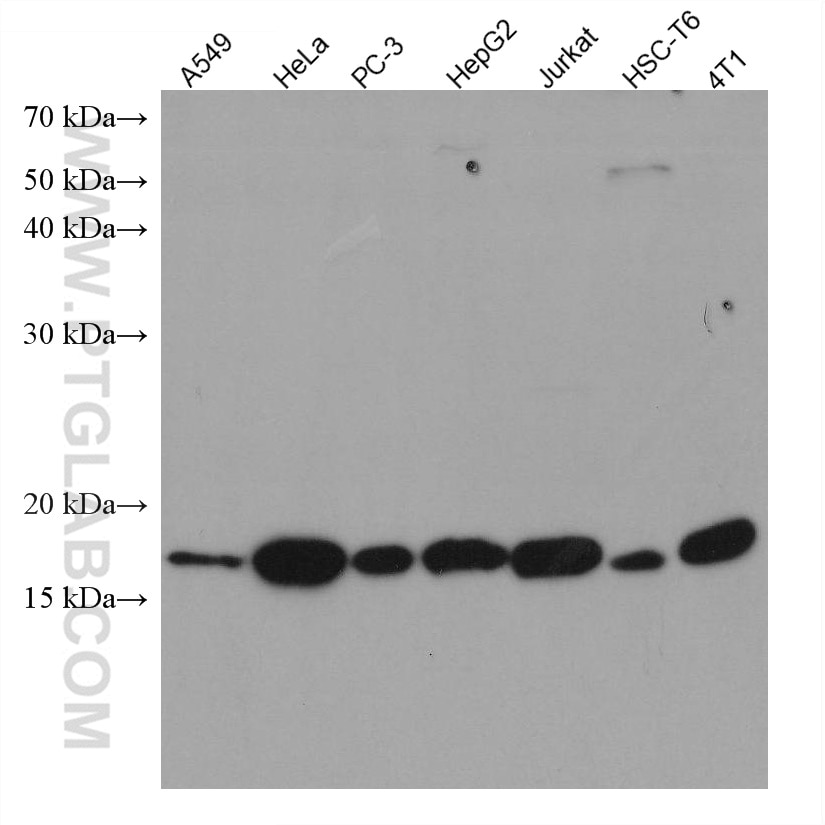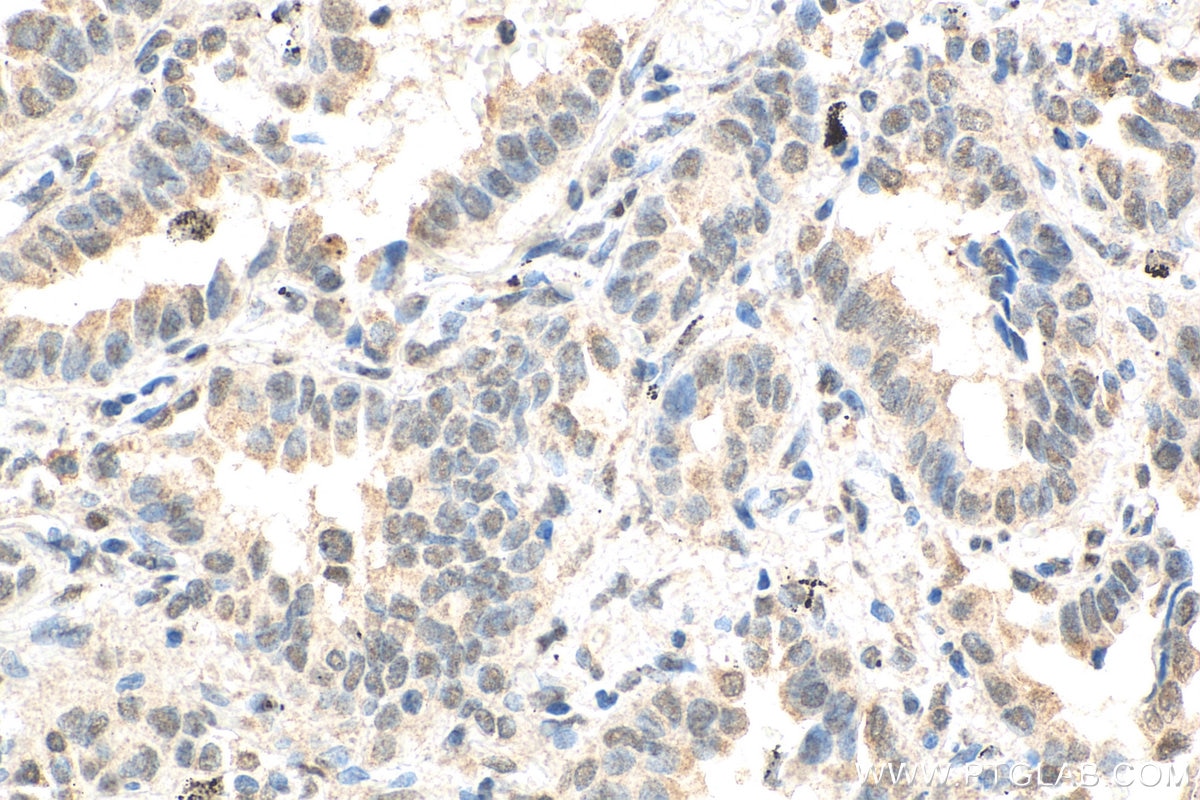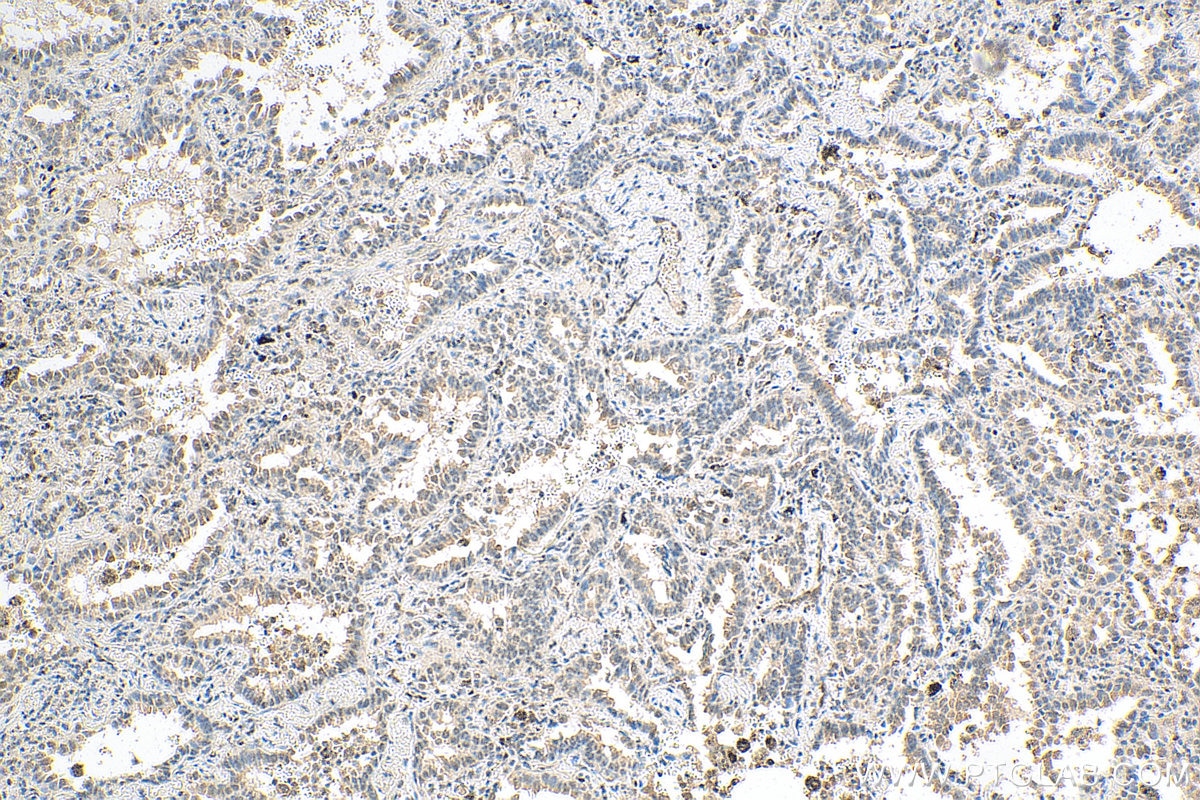Anticorps Monoclonal anti-ID1
ID1 Monoclonal Antibody for WB, IHC, ELISA
Hôte / Isotype
Mouse / IgG1
Réactivité testée
Humain, rat, souris
Applications
WB, IHC, ELISA
Conjugaison
Non conjugué
CloneNo.
1H3G11
N° de cat : 67827-1-Ig
Synonymes
Galerie de données de validation
Applications testées
| Résultats positifs en WB | cellules A549, cellules 4T1, cellules HeLa, cellules HepG2, cellules HSC-T6, cellules Jurkat, cellules PC-3 |
| Résultats positifs en IHC | tissu de cancer du poumon humain, il est suggéré de démasquer l'antigène avec un tampon de TE buffer pH 9.0; (*) À défaut, 'le démasquage de l'antigène peut être 'effectué avec un tampon citrate pH 6,0. |
Dilution recommandée
| Application | Dilution |
|---|---|
| Western Blot (WB) | WB : 1:1000-1:6000 |
| Immunohistochimie (IHC) | IHC : 1:150-1:600 |
| It is recommended that this reagent should be titrated in each testing system to obtain optimal results. | |
| Sample-dependent, check data in validation data gallery | |
Applications publiées
| WB | See 5 publications below |
| IHC | See 1 publications below |
Informations sur le produit
67827-1-Ig cible ID1 dans les applications de WB, IHC, ELISA et montre une réactivité avec des échantillons Humain, rat, souris
| Réactivité | Humain, rat, souris |
| Réactivité citée | rat, Humain |
| Hôte / Isotype | Mouse / IgG1 |
| Clonalité | Monoclonal |
| Type | Anticorps |
| Immunogène | ID1 Protéine recombinante Ag13359 |
| Nom complet | inhibitor of DNA binding 1, dominant negative helix-loop-helix protein |
| Masse moléculaire calculée | 16 kDa |
| Poids moléculaire observé | 18 kDa |
| Numéro d’acquisition GenBank | BC000613 |
| Symbole du gène | ID1 |
| Identification du gène (NCBI) | 3397 |
| Conjugaison | Non conjugué |
| Forme | Liquide |
| Méthode de purification | Purification par protéine G |
| Tampon de stockage | PBS with 0.02% sodium azide and 50% glycerol |
| Conditions de stockage | Stocker à -20°C. Stable pendant un an après l'expédition. L'aliquotage n'est pas nécessaire pour le stockage à -20oC Les 20ul contiennent 0,1% de BSA. |
Informations générales
ID (inhibitor of DNA binding) proteins contain a helix-loop-helix (HLH) motif and regulate tissue-specific transcription within several cell lineages. They do not bind DNA directly, but inhibit lineage commitment by binding basic helix-loop-helix (bHLH) transcription factors through their HLH motif. ID1 proteins lack a basic DNA-binding domain but are able to form heterodimers with other HLH proteins, thereby inhibiting DNA binding. ID proteins contribute to cell growth, senescence, differentiation, and angiogenesis. Inhibitor of differentiation or DNA binding-1 (ID1) interacts with the transactivation domain of p65 (p65TAD) both in vitro and in vivo. The molecular weight of ID1 is about 18 kDa.
Protocole
| Product Specific Protocols | |
|---|---|
| WB protocol for ID1 antibody 67827-1-Ig | Download protocol |
| IHC protocol for ID1 antibody 67827-1-Ig | Download protocol |
| Standard Protocols | |
|---|---|
| Click here to view our Standard Protocols |
Publications
| Species | Application | Title |
|---|---|---|
Oncogenesis Neuron-specific enolase promotes stem cell-like characteristics of small-cell lung cancer by downregulating NBL1 and activating the BMP2/Smad/ID1 pathway. | ||
Front Pharmacol Novel Pyrazolo[3,4-b] Pyridine Derivative (HLQ2g) Attenuates Hypoxic Pulmonary Hypertension via Restoring cGKI Expression and BMP Signaling Pathway | ||
Pulm Circ Antiproliferative effect of selexipag active metabolite MRE-269 on pulmonary arterial smooth muscle cells from patients with chronic thromboembolic pulmonary hypertension | ||
Int J Biol Sci Nicotinamide adenine dinucleotide kinase promotes lymph node metastasis of NSCLC via activating ID1 expression through BMP pathway | ||
Mol Cell Biochem PSAT1 promotes the progression of colorectal cancer by regulating Hippo-YAP/TAZ-ID1 axis via AMOT |




